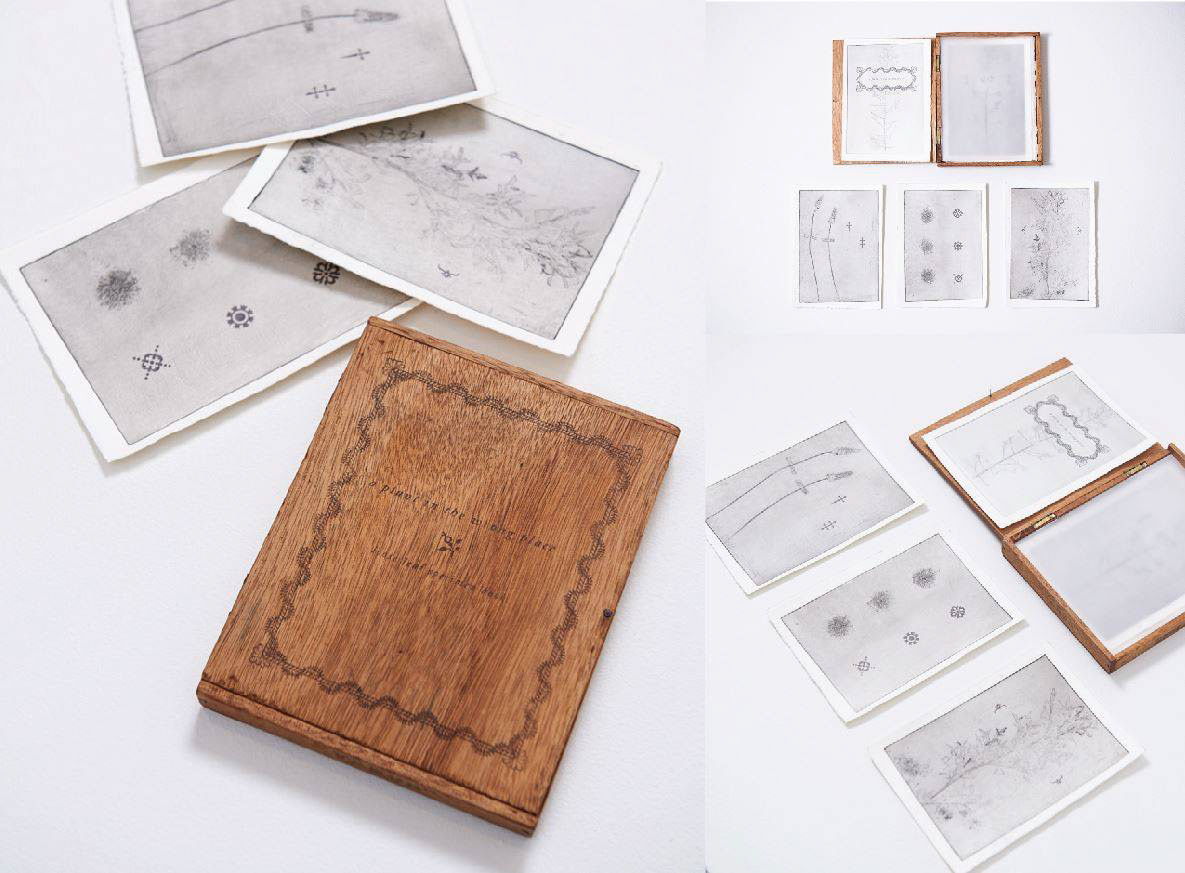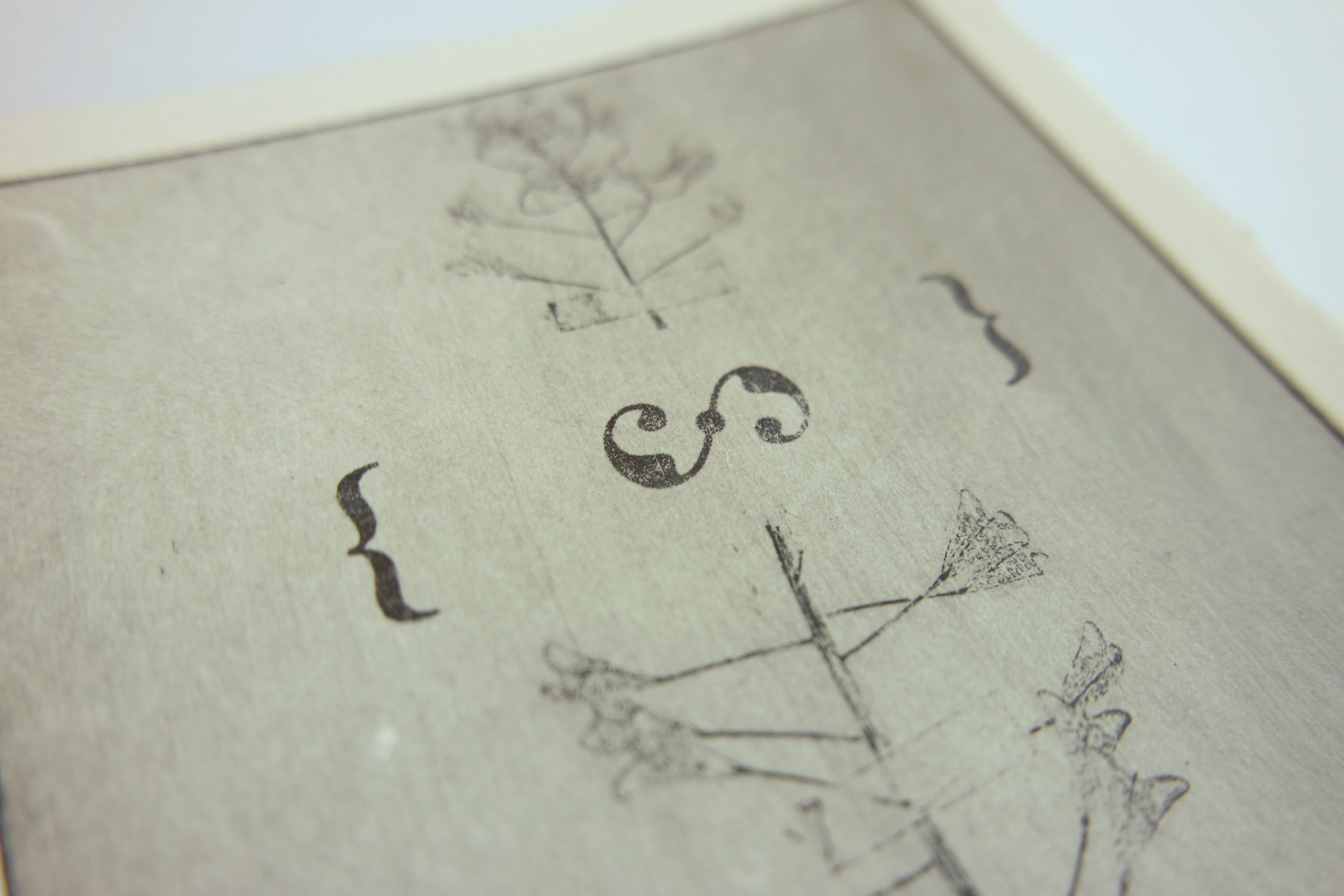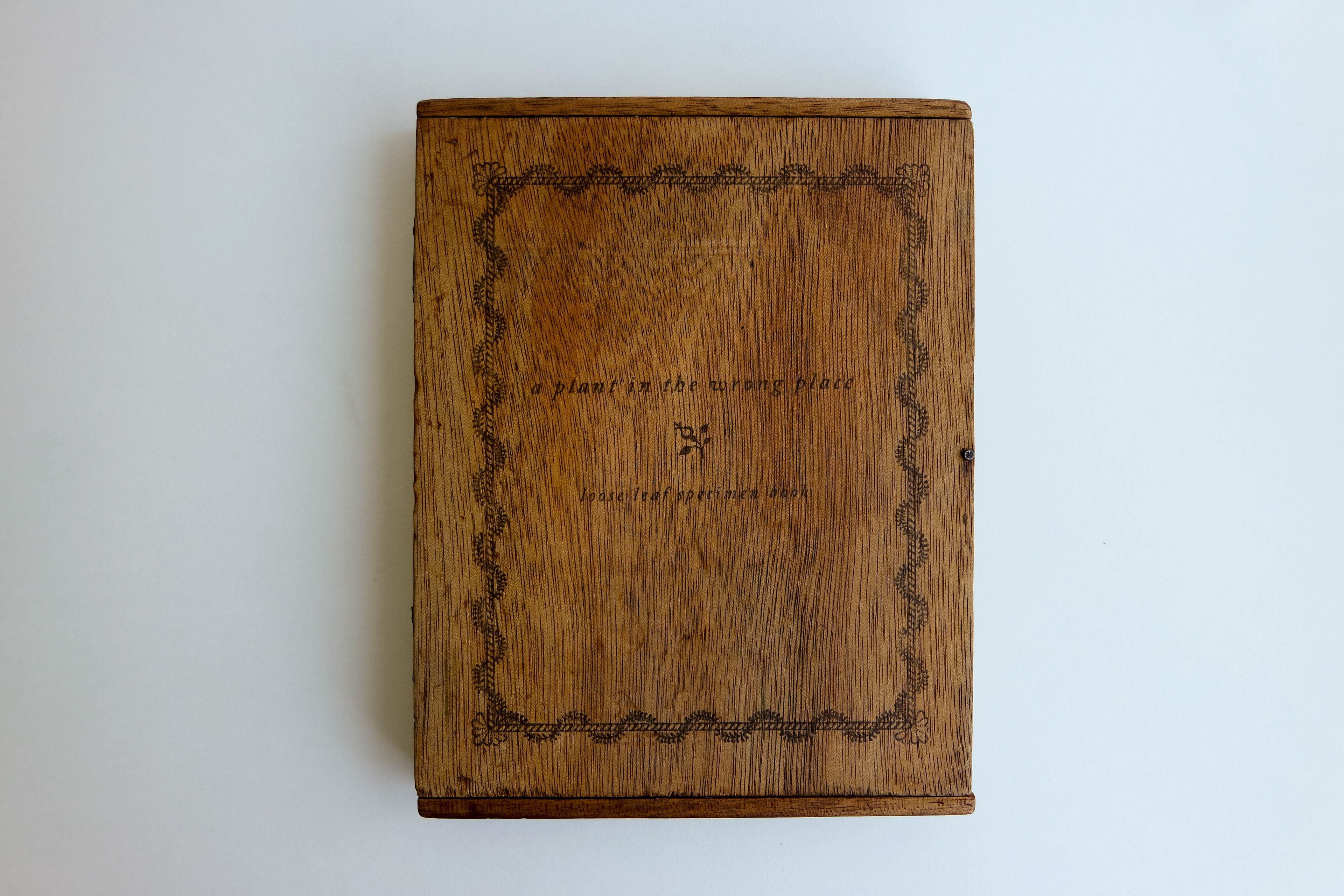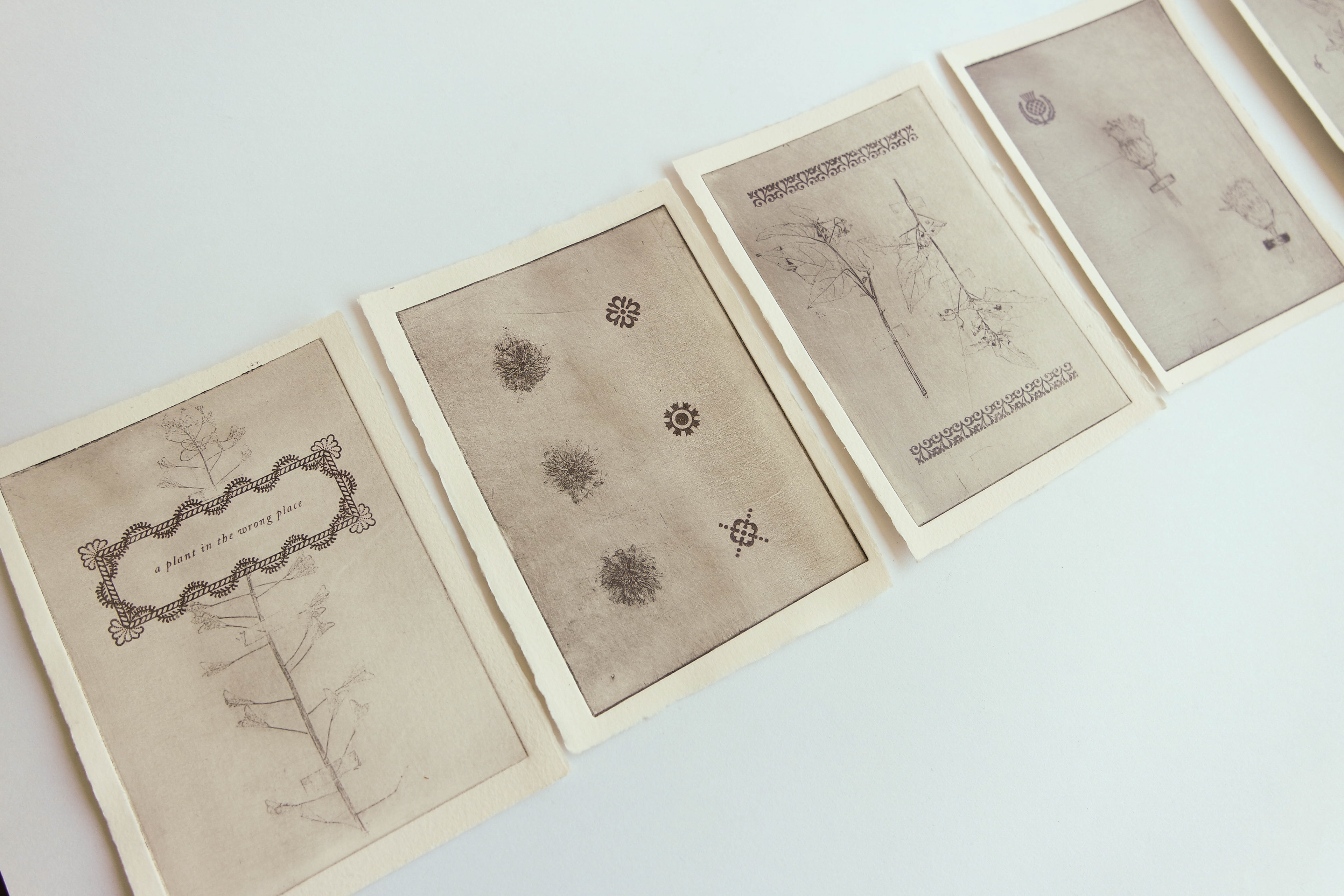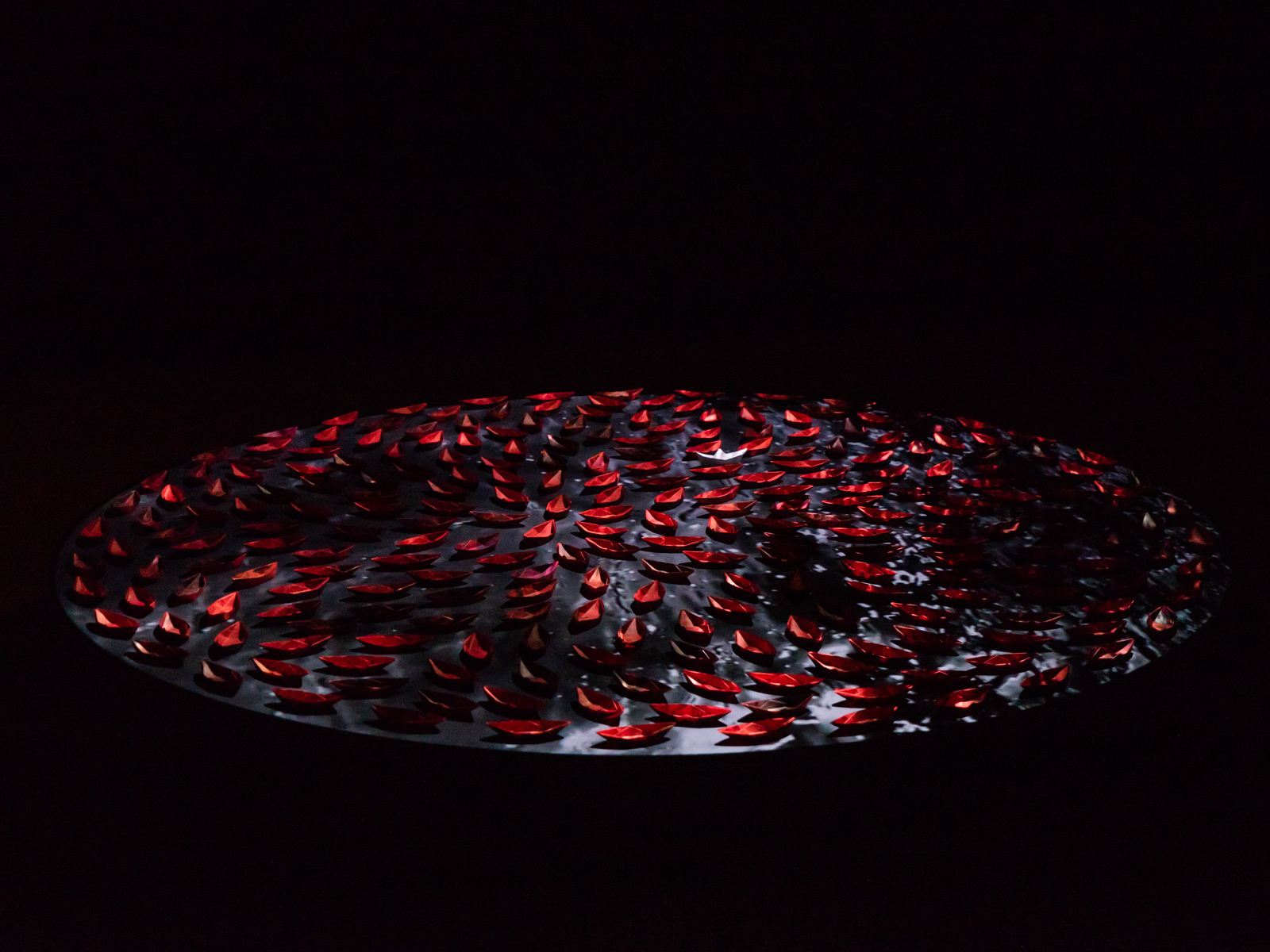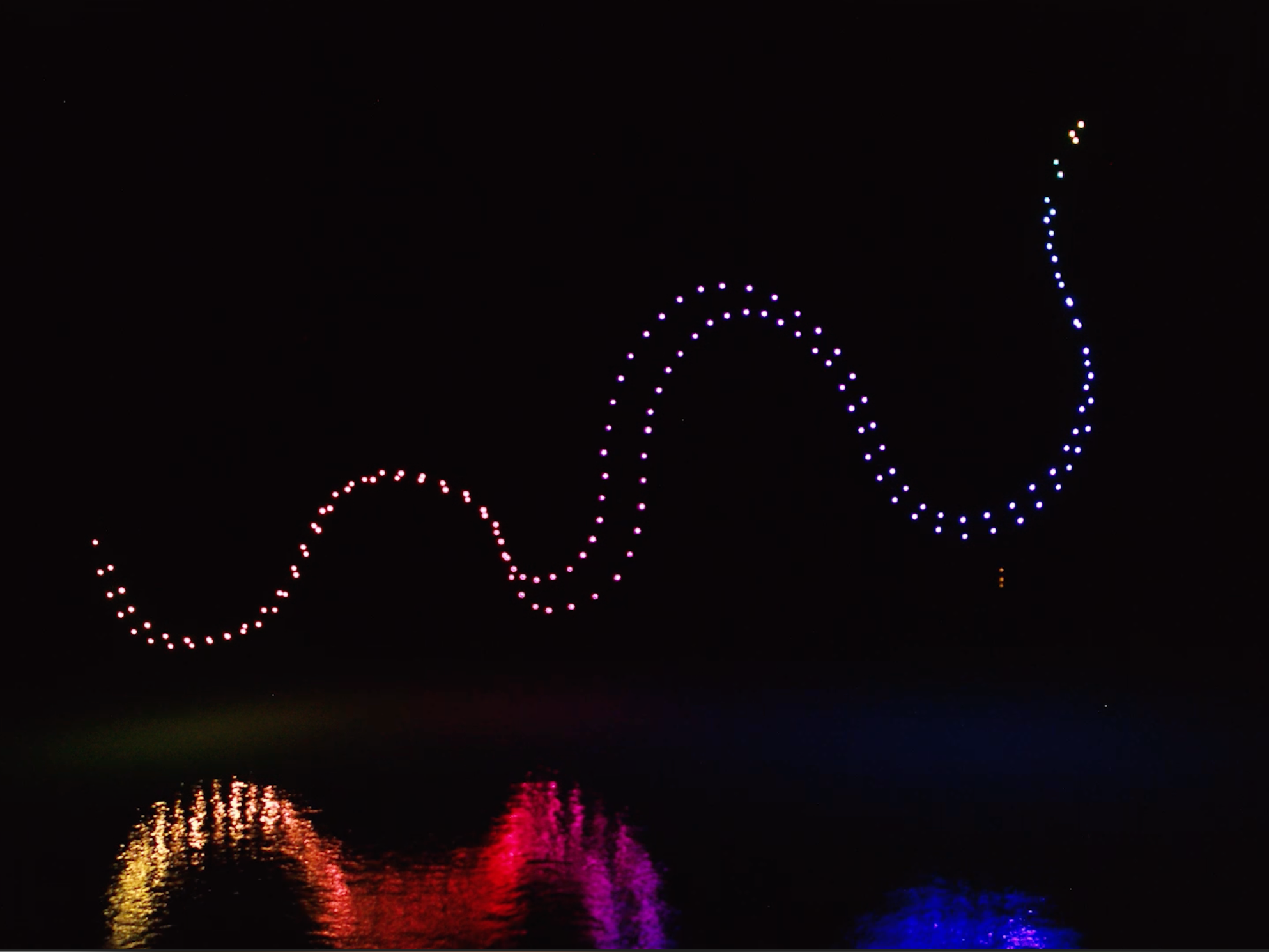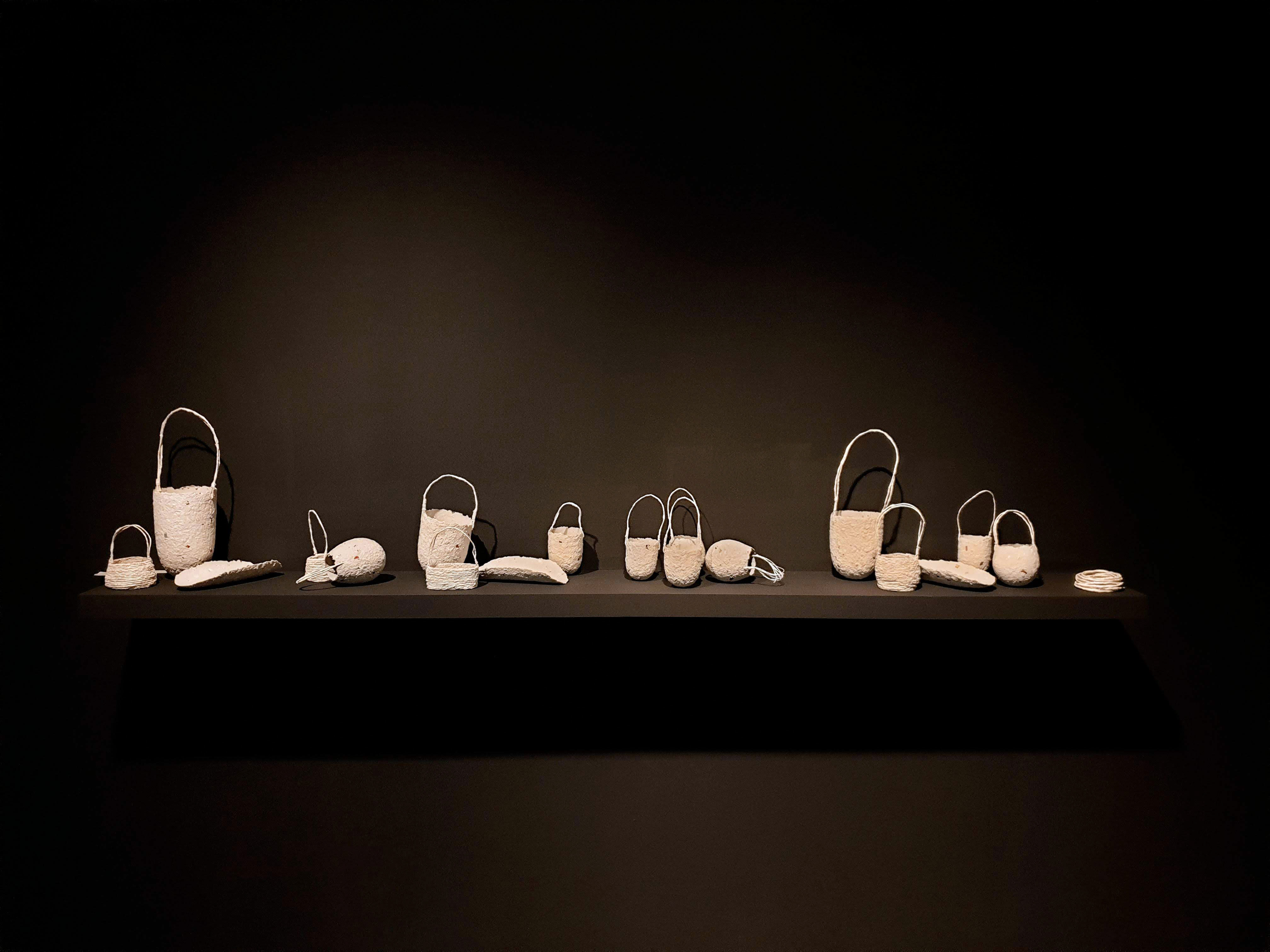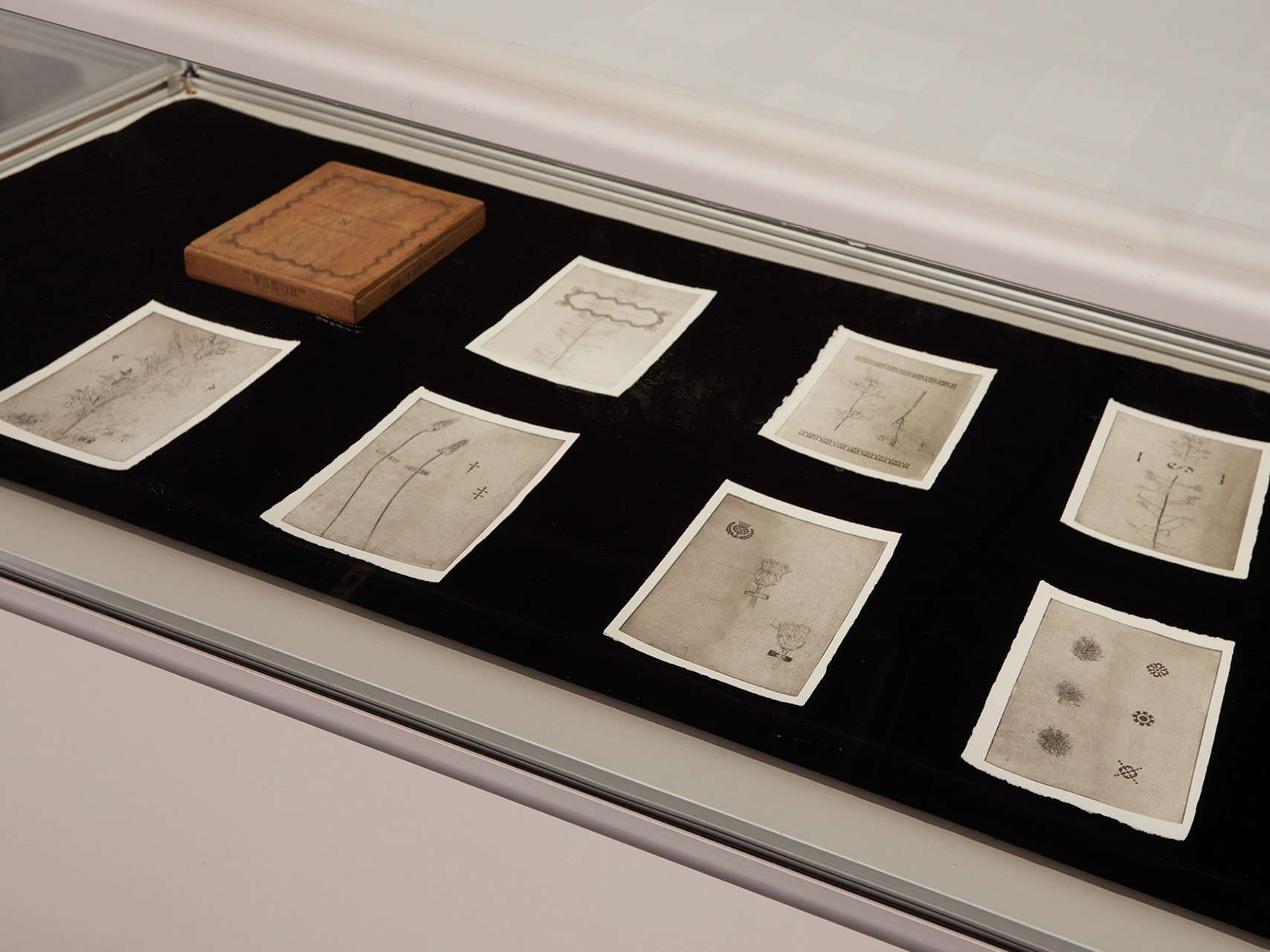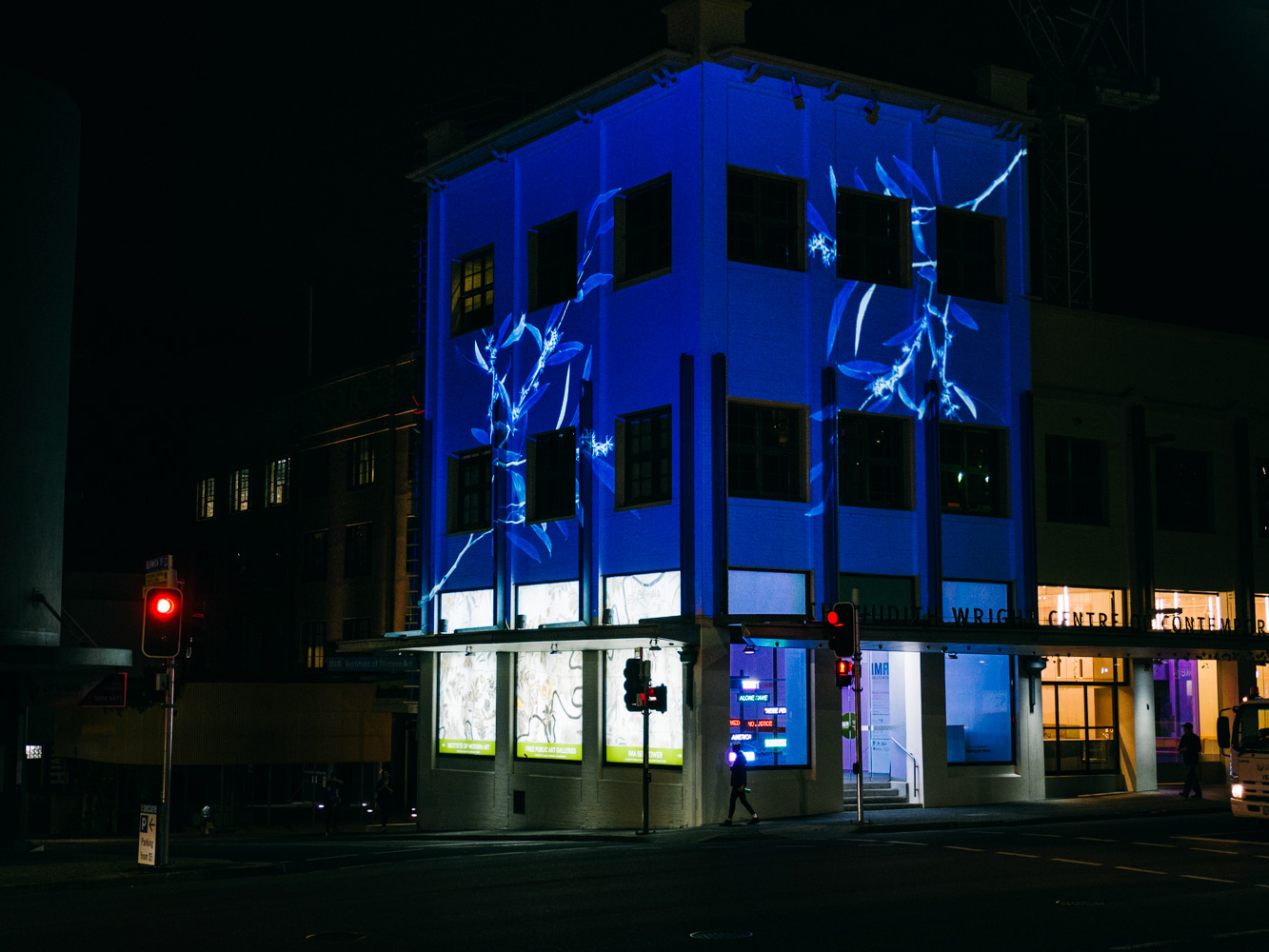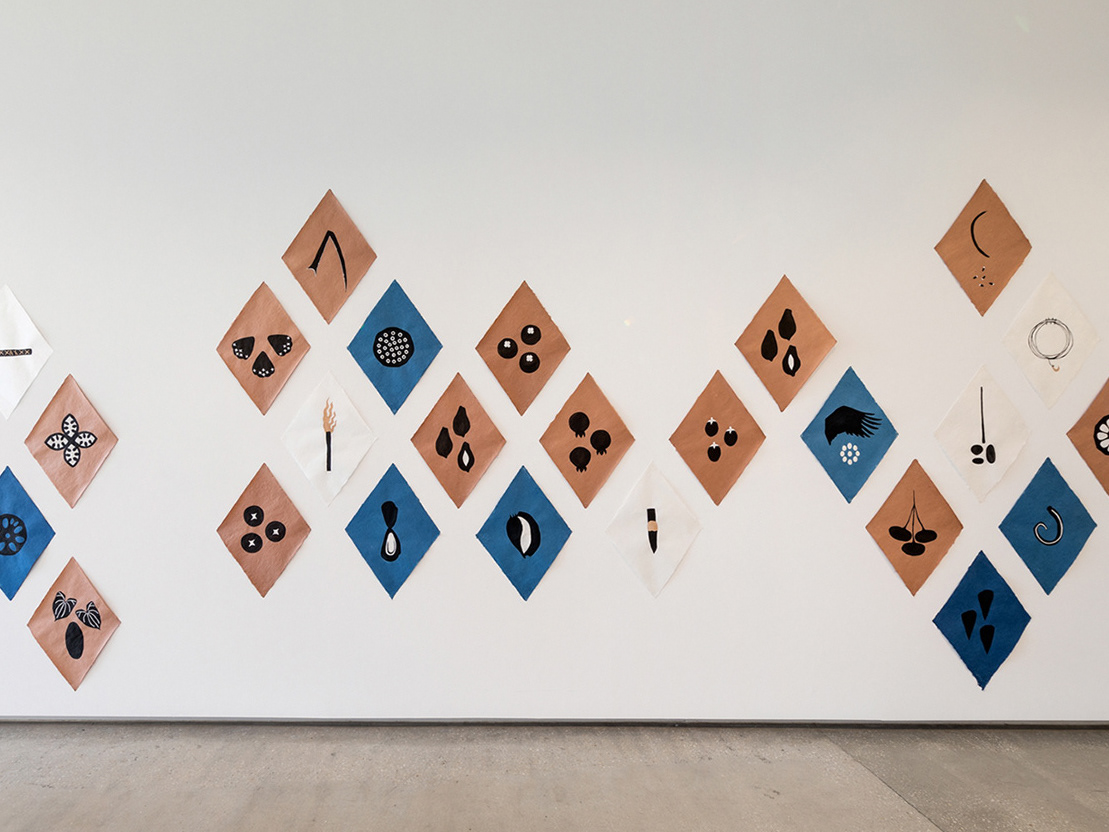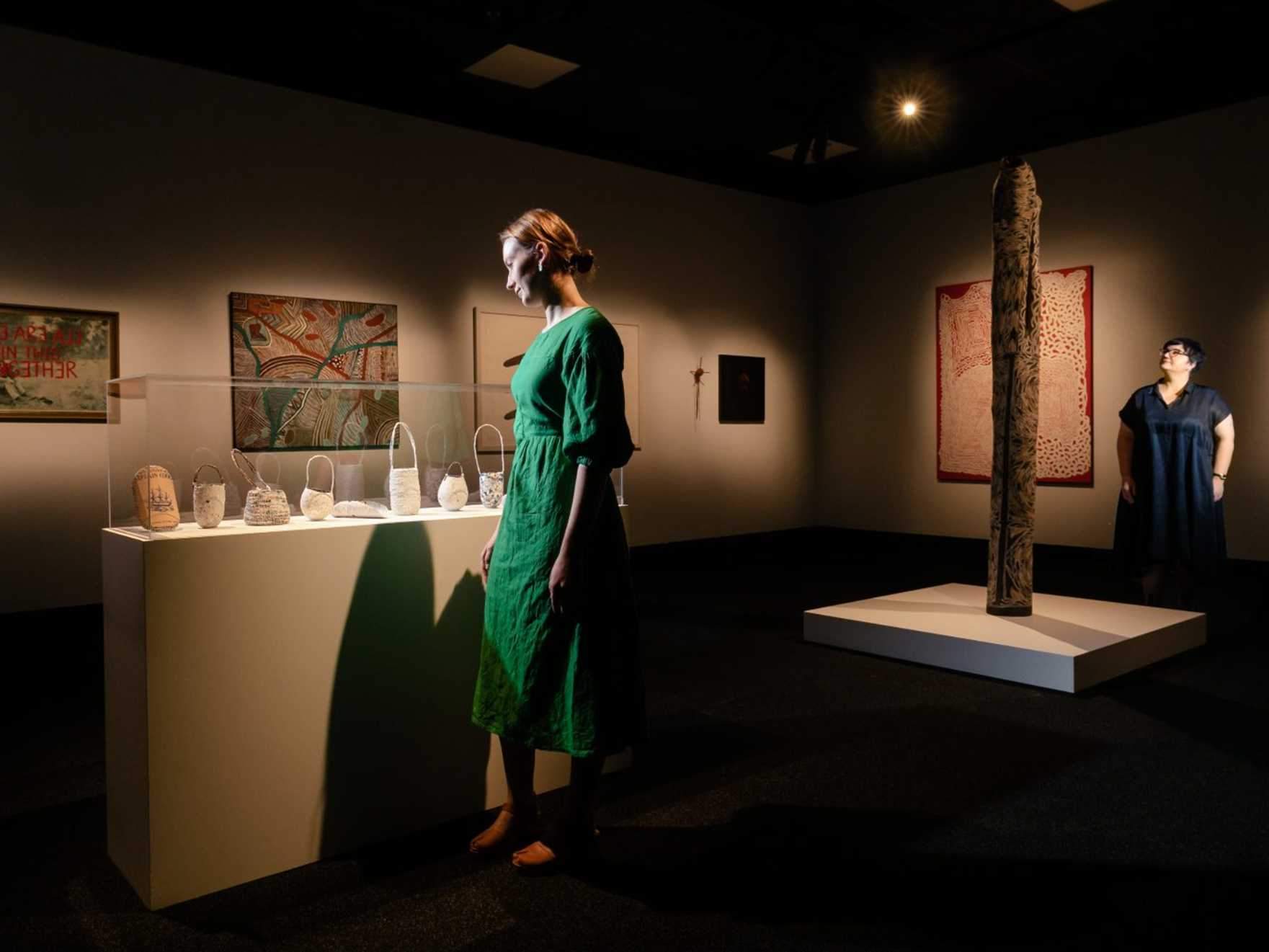Playing for Keeps Vol.2 2021
Playing for Keeps 2021
Exhibition text: PIVOT II - Onespace Gallery
Play for Keeps by Jenna Lee uses a loose-leaf book form to interrogate language, particularly its ability to create euphemisms for the theft and dispossession of Aboriginal culture. Based on a children’s book used for ‘learn to read’ programs titled The Lost? Boomerang, playing cards are adapted to identify 52 words to describe the term ‘lost’ (stolen, archived, copied, collected), which allude to the acquisition of Aboriginal objects by institutions and individuals but also to the wholescale theft of the boomerang motif (so often used on souvenirs). Scathing yet playful, Lee’s use of a book for young readers and the archetypal recreational playing cards lightens her difficult message about the injustices in our shared pasts.
Play for Keeps by Jenna Lee uses a loose-leaf book form to interrogate language, particularly its ability to create euphemisms for the theft and dispossession of Aboriginal culture. Based on a children’s book used for ‘learn to read’ programs titled The Lost? Boomerang, playing cards are adapted to identify 52 words to describe the term ‘lost’ (stolen, archived, copied, collected), which allude to the acquisition of Aboriginal objects by institutions and individuals but also to the wholescale theft of the boomerang motif (so often used on souvenirs). Scathing yet playful, Lee’s use of a book for young readers and the archetypal recreational playing cards lightens her difficult message about the injustices in our shared pasts.
Image: Courtesy of the artist and MARS Gallery.
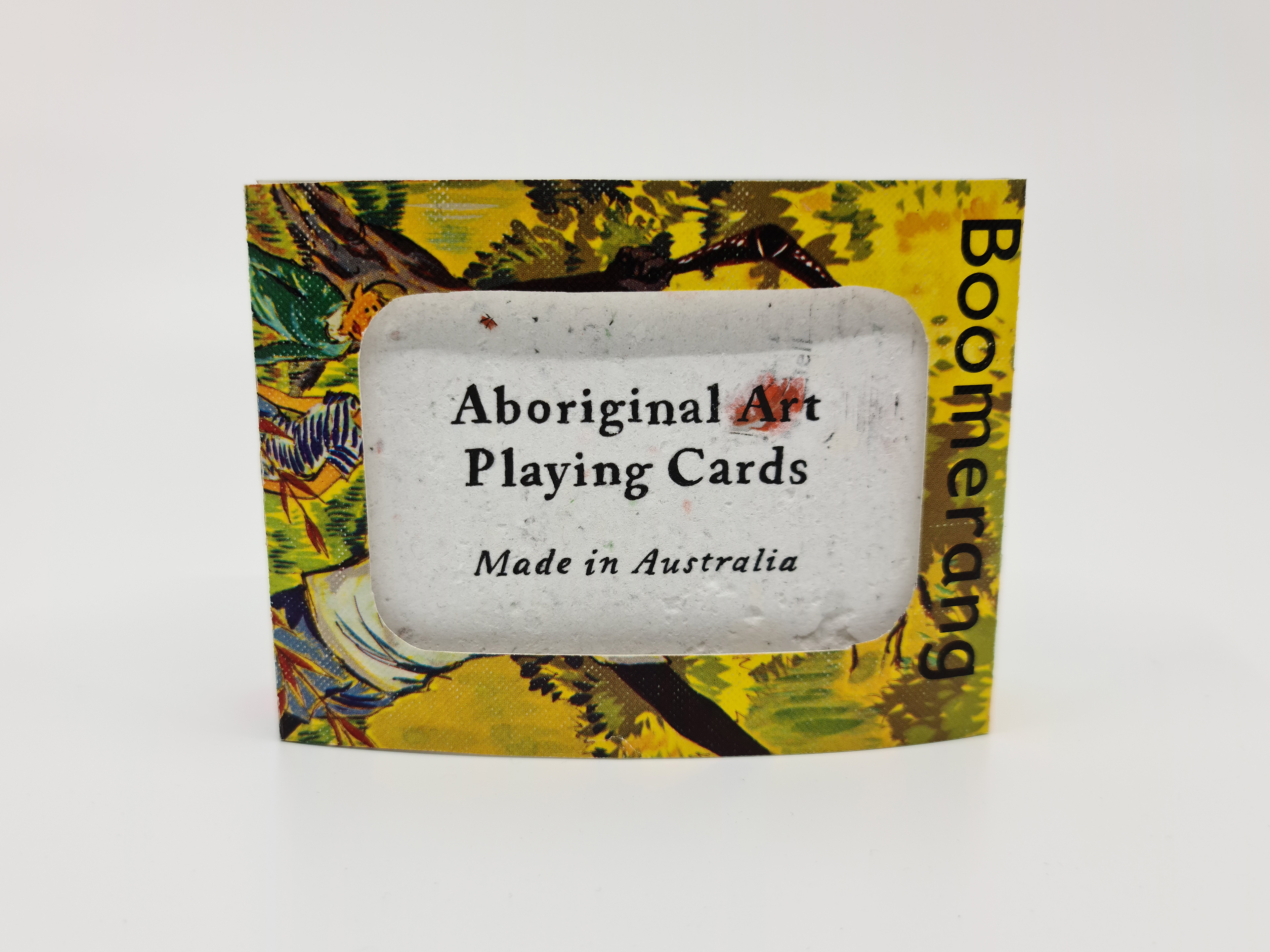
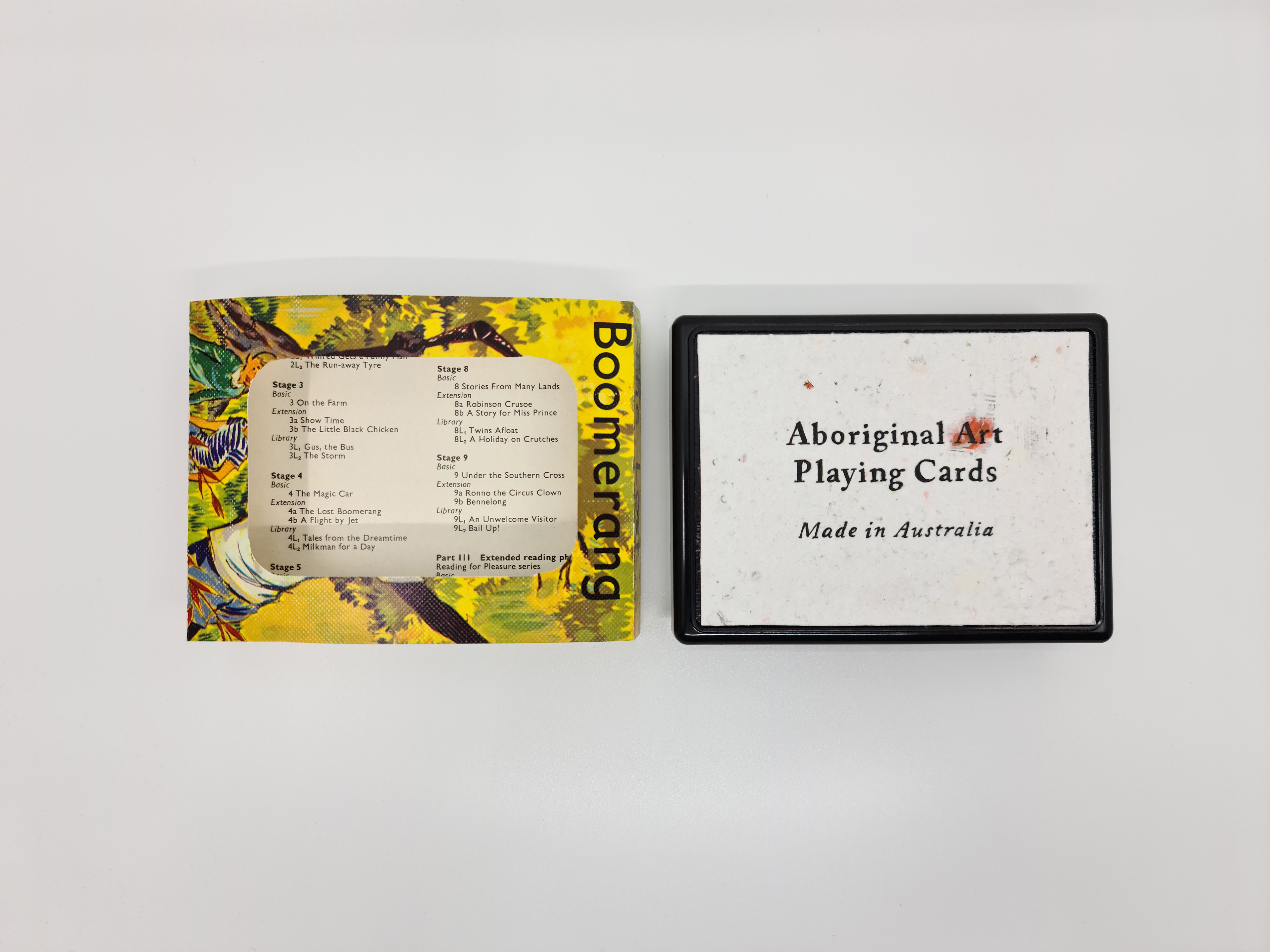
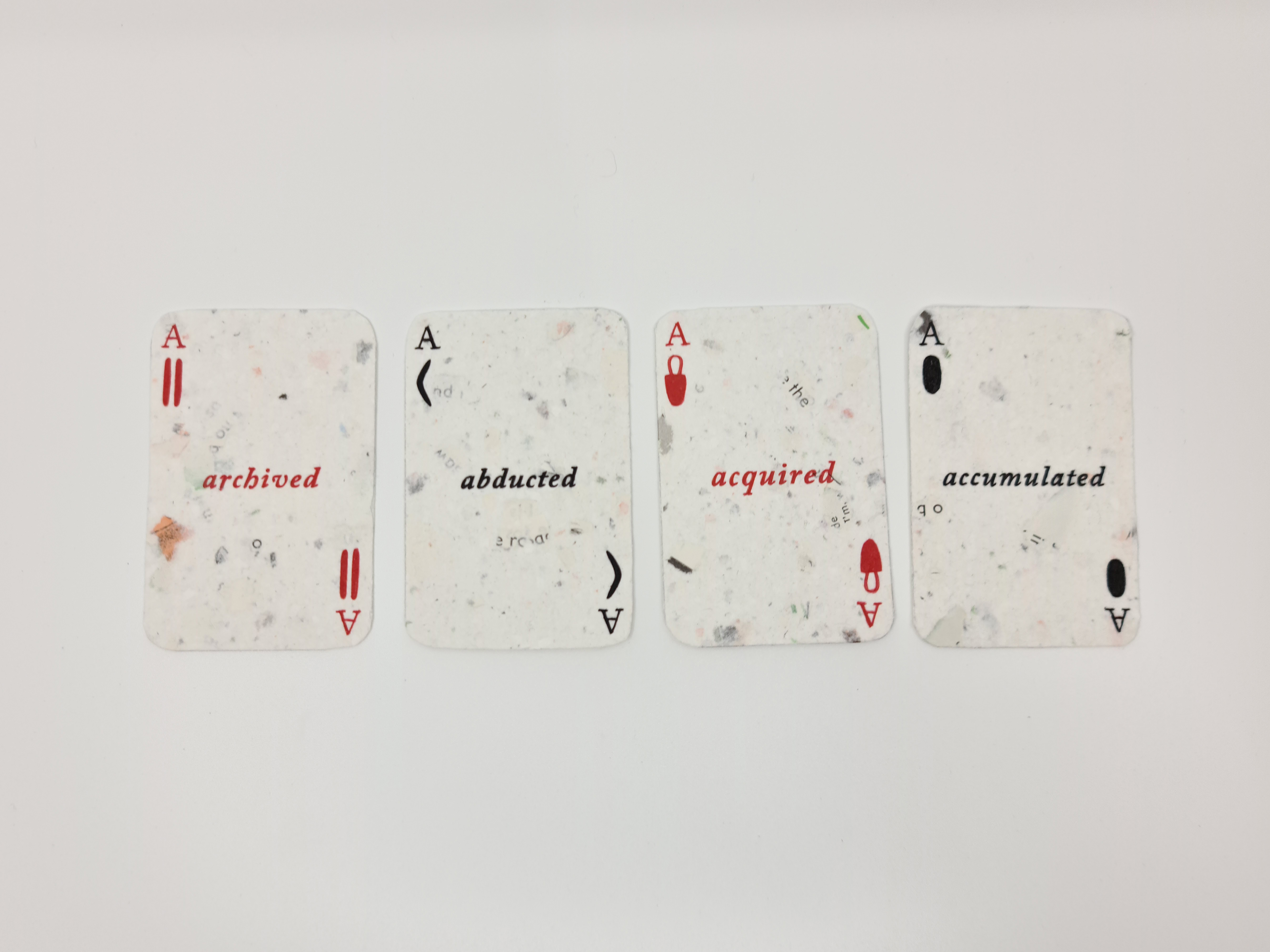
HIStory Book, 2020
Whose story is written as history? Created in response to the 250-year anniversary of Lieutenant James Cook’s arrival, ’HIStory Book’ looks to reclaim agency of historic representation of Aboriginal people in Australia. Cook is a powerful and enduring symbol for the omnipresent, white, patriarchal, narrative and its continuing assertion of power over First Nations stories.
This book contains hand-pressed paper from deconstructed pages of the Ladybird history book ‘The Story of Captain Cook’ where I aim to take this narrative and reconstruct it as a story of personal and cultural resilience, beauty and strength. The work is created through a ritualistic transformation of Cook’s printed story through acts of analysis, deconstruction and reconstruction to rewrite his story as my own. This act of defiance and personal dominance over his story is presented using paper vessels, reminiscent of those which my ancestors would have created, alongside 11 sheets of ‘blank’ paper.
The book is presented in a purpose-built, handmade Solander Box. Drawing out historical connections of the box to the Endeavour voyages through its creator Daniel Solander and the keeping of objects (much like the two paper vessels) within the walls and storage o the British Museum.
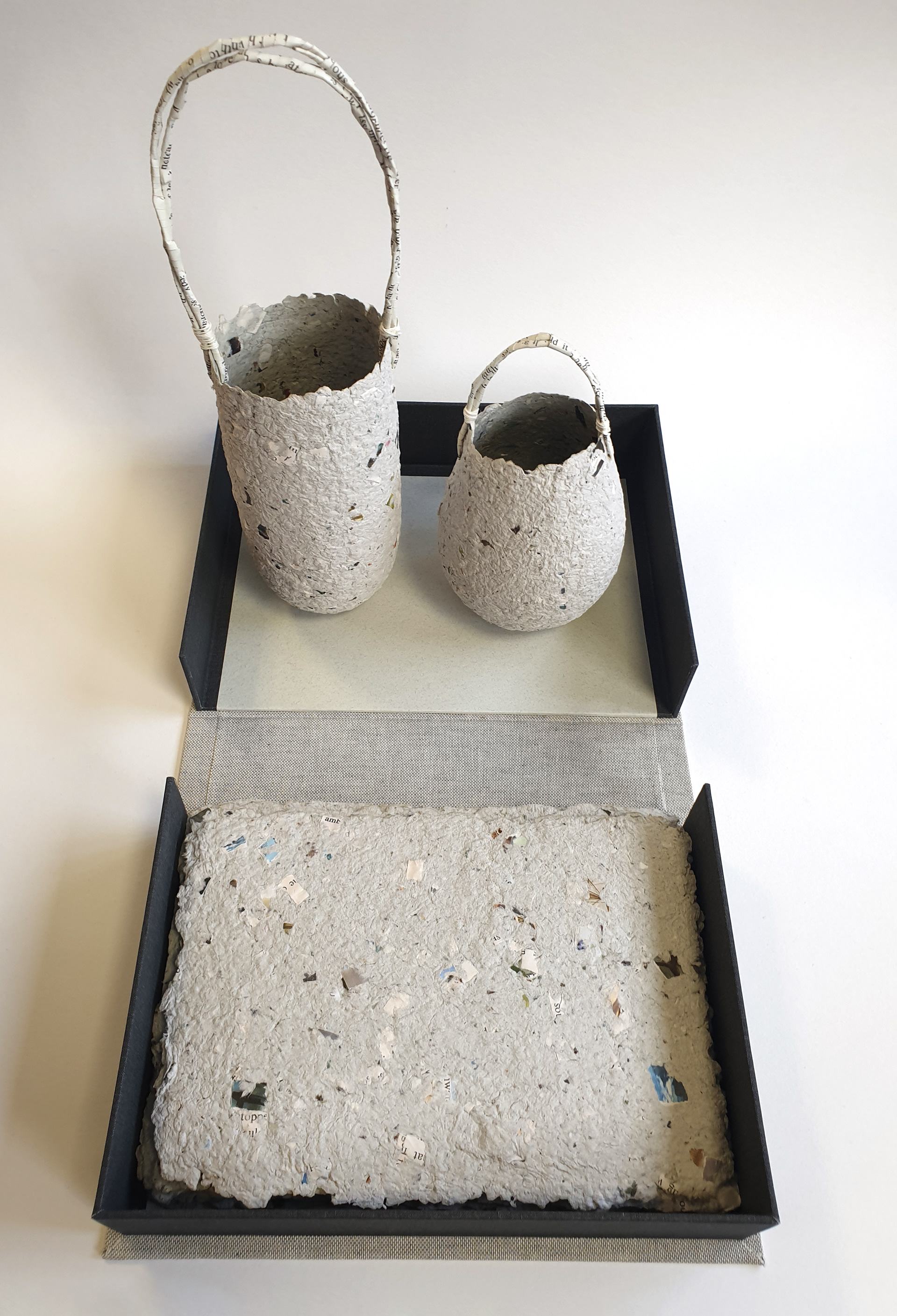


A Plant in the Wrong Place. Loose Leaf Type Specimen Book. 2016
A Plant in the Wrong Place explores the idea that a weed is nothing more than a plant growing in the wrong place. It represents feelings of mixed identities; the feeling of never quite belonging in certain spaces, spending your life in the wrong place.
The etchings of common garden weeds are combined with fleurons (a type glyph that takes on the form of a leaf or flower) from the Caslon type family. Also known as a printers flower these ‘plants’ were born within a world of metal, ink and paper.
These two representations of plants in the wrong place are combined to produce a loose-leaf type specimen book. Playing with the ideas of type specimens books produced by type designers and the type specimen, the specimen in which the scientific naming is attached.
